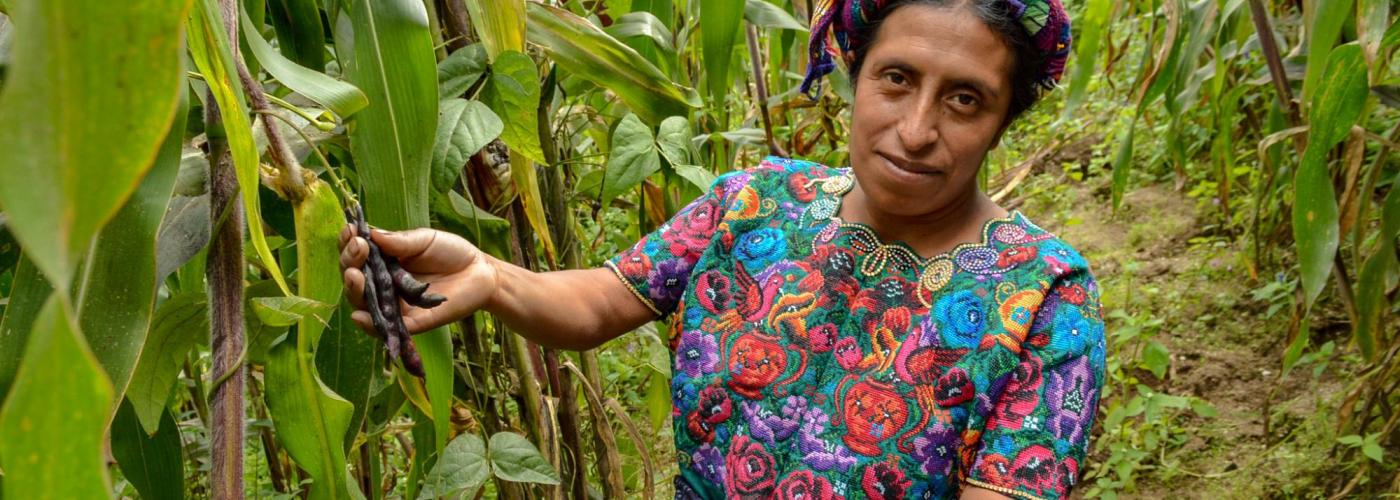The Role Variety Identification Numbering Systems Play in Harmonized Seed Trade
Image

This post was originally posted to Agrilinks and written by Aline O’Connor of Agri-Experience, Ltd. and Mark Huisenga of the Bureau for Food Security’s Office of Market and Partnership Innovations.
Common variety identification numbering (VIN) systems require breeding institutions to assign a singular number to each variety they develop and offer for seed production and/or commercialization. This number must always be used to identify the variety for purposes of release, seed production, and commercialization, although the presence of a branded name or number by licensors is not necessarily precluded, depending upon national seed laws.
A key constraint to raising agricultural productivity in Africa, particularly sub-Saharan Africa, is the lack of commercial availability of high-quality seed of improved modern crop varieties. In recent years, stakeholders have made a great effort to develop regional variety catalogs to increase the supply of high-quality seed of improved modern varieties. The regional variety catalog lists varieties that have been released in every country in the region.
Recent regulatory practices in most countries in sub-Saharan Africa required a crop variety to be formally released by the relevant national governing body before the variety could be commercialized and sold to farmers. For many seed companies, the process of releasing a variety they wished to commercialize in each country in which they wished to sell it was expensive and very lengthy. In an effort to address this, stakeholder discussions about regional catalogs have been held, resulting in a formal agreement that if a variety is released in two separate countries in a region, and application for regional release is made and approved, it will then be automatically released in every country in the region. This will become official by formally listing the variety in the regional catalog.
Regional catalogs have the potential to significantly reduce both the time and expense of releasing varieties in multiple countries, thus increasing regional seed market potential and attractiveness to investors and thus seed supply for farmers.
Large seed multinational companies (MNCs) generally develop and market varieties with proprietary or exclusive genetics; no other seed company has access to the same variety unless the MNC decides to license the variety to a third party. Proprietary varieties are marketed in all countries with a common variety name, e.g., Duma 43.
Medium and smaller companies — generally national or regional players — can have proprietary varieties, but more often they are marketing and selling varieties for which the breeding work was done by an international research center (generally a CGIAR center) or a national breeding program or foundation that obtained the license of that product from a CGIAR center or MNC (e.g., the African Agricultural Technology Foundation under the Water Efficient Maize for Africa Project).
Varieties from national breeding programs often contain genetic material from a CGIAR center and may be partially or wholly comprised of CGIAR source material. In each country, as national programs or seed companies submit these varieties for release, a unique variety name or number is ascribed to the variety. This results in a situation where two varieties released in two different countries may be identical in terms of genetic make-up (pedigree) and source material but be known by two different varietal or company brand names. When this happens, these varieties are not eligible for regional variety release due to the differing names, thus reducing the market size for, potential investment in, and seed supply of, these varieties.
A VIN system was introduced in the United States approximately ten years ago, and one of the goals of this study is to learn from this experience in order to inform the exploration of a similar system in sub-Saharan Africa.
To date, varieties listed in East and Southern African regional catalogs are largely MNC-owned varieties, and it is hoped that the introduction of a common variety numbering system for varieties bred by institutions other than MNCs will accelerate listing in the regional catalogs, which will then lead to increased commercialization and cross-border seed trade. At present, the Common Market for Eastern and Southern Africa catalog contains 48 registered varieties of maize and Irish potato. The Southern Africa Development Community catalog contains 24 maize varieties.
Since the feasibility study of using a common variety identification numbering system was completed in August 2017 for USAID through Social Impact Agri Experience, Ltd., the International Maize and Wheat Improvement Center (CIMMYT) and International Crops Research Institute for the Semi-Arid Tropics have reported they have introduced the VIN system, and other international research centers are considering its adoption.


